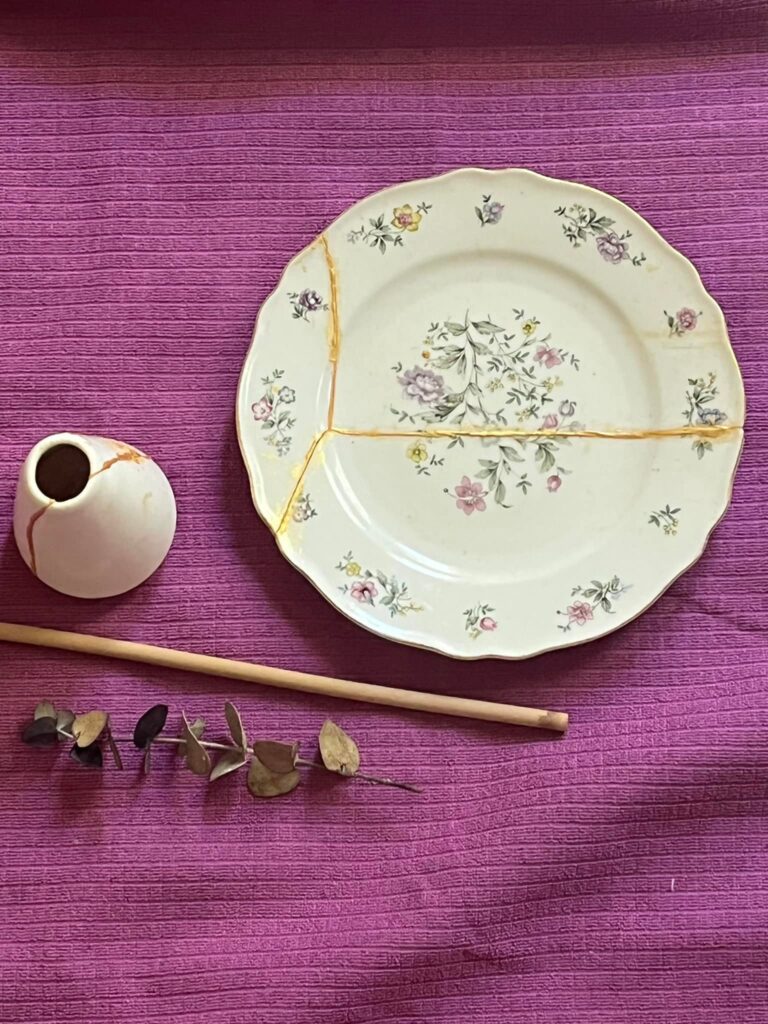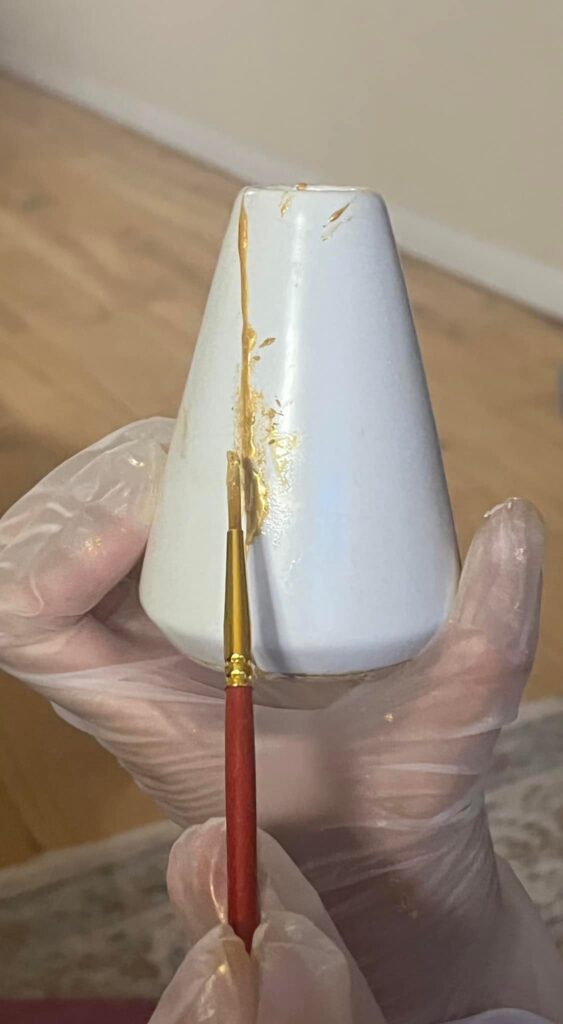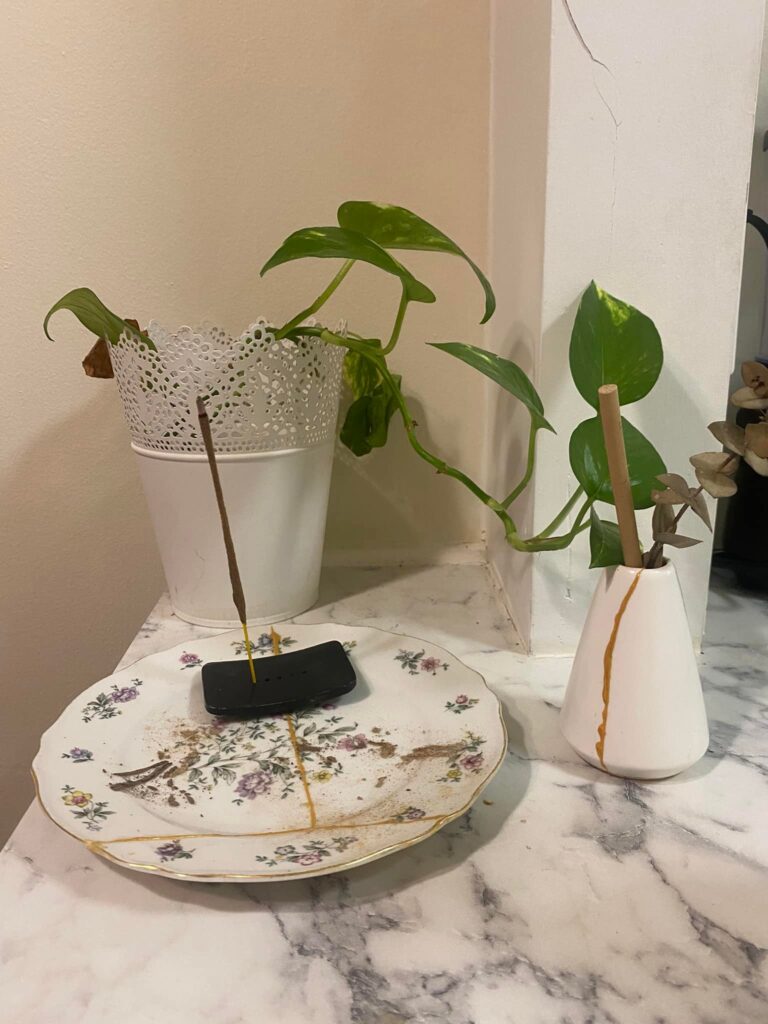Kintsugi is the Japanese art of repairing broken pottery.
The process uses powdered gold, silver, etc. to fix + almost highlight the damage. It treats breakage & repair as part of the object’s history rather than hiding/camouflaging it.
It’s a ballsy philosophy but goddamn it, I find it beautiful and honest.
History goes, Japan’s shōgun sent a broken Chinese tea bowl to China for repair. When it came back, the damage was fixed using ugly metal staples. Unhappy with how it looked, Japanese craftsmen tried to find a more aesthetically pleasing solution. Somehow they birthed this technique!
At some point, they supposedly got so obsessed with it that they started breaking things just so it can be fixed! If you google Kintsugi, you’ll actually see ceramics where this has become a style/design. 
Aware of Japan’s (& humans’) reputation for perfectionism, I find all of this fascinating … humbling.
I’ve broken a lot of things and seen lots of broken things in my very short  lifetime.
lifetime.
The first often left me with feelings of shame, guilt, frustration. Lots of internalized — ugh, why am I so clumsy, so careless?
The latter often left me with feelings of despair, doom + cynicism. Lots of externalized — why is society like this?
When I learned about Kintsugi, I started keeping some of my broken things. I finally got to try it! (Very basic starter kit @ Etsy/Amazon)
My optimistic brain looked at this as a fun activity — a joyful experience where I finally save my broken things, they will look even better than before and all is well! Clap, clap, ME the damsel in shining armor!
HA. Boy, did I not know what I was in for.
It’s all fun and games to talk about fixing, repairing & saving… until you actually have to do it.
With something broken, it’s easy to want to handle it as it is. It’s already broken anyway!
But to do Kintsugi — to make repair part of its history? To highlight and celebrate the damage? To make it beautiful again?
One has to be very deliberate — intentional.
You hold it very carefully, more than if it was not broken at all.
You handle it with a lot of patience and gentleness like its life depends on it (because it does).
And you accept the fact that it cannot be what it was.
If you’re fixing something valuable, personal, then there’s always that little pinch — the wish that it didn’t break in the first place.
But maybe that’s part of the process. The full acceptance of what is (broken) so you can move on and see it for what it could be.
Anyway, this was my first attempt  I have a long way to go before I get to that “celebrating the damage” Lol It was a valuable experience and it was, eventually, fun
I have a long way to go before I get to that “celebrating the damage” Lol It was a valuable experience and it was, eventually, fun 
Although my brain was constantly poking me, “Is it worth it? How about now? Is it worth it?”
That is the ultimate question, isn’t it?
Is it worth it?
Maybe that’s why Kintsugi is considered an art. Art, the value of which is very personal but also very collective.
I always wonder, what is worth it for us, as a society to repair (vs just throw away)?
When we figure that out, I petition we try to #Kinstugi it together!


